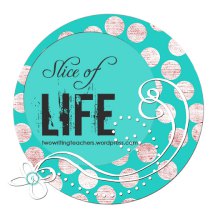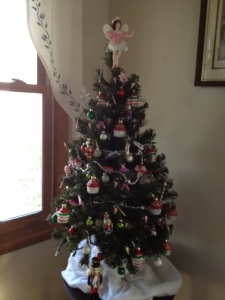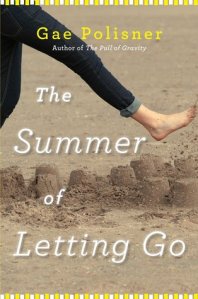Three bloggers I admire very much have nominated me for a Sunshine Award. I feel so honored to be included on their lists of “bloggers who inspire,” lists that include the names of many bloggers who inspire me. Over the next day or two, I will answer all their questions and come up with my own list, but until then, I’m going to answer one question that both Amy and Michelle asked: What is your “one little word” for 2014?
Balance. We hear this word everywhere. Balance your checkbook. Eat a balanced diet. Balance your tires. Entire Eastern religions are built around the idea of balance. In art, balance is achieved when no single element of a work overpowers another. So why is it so easy for our lives to become unbalanced? How is it that we forget the importance of eating right, exercising, doing things we love, and finding time for friends and family every day?
I took this picture at Point Judith lighthouse in Rhode Island last September. The asymmetry of the construction of this cairn intrigued me. How does the small stone on the left remain poised on the end of the stick? Does the stability of the larger rock on the right allow this?
In 2014, I want to be the small stone on the left, poised on the brink of whatever the day brings, yet able to maintain my balance. Just as bridges have firm footings and extra capacity (thanks, Anne!) that allows them to withstand forces of use, wind and weather, the firm foundation of the large rock keeps this cairn in place. I think that if our beliefs are solid, if we know our own mind, we have a firm foundation for our choices, both personal and professional. We may waver or deviate a little, after all flexibility is a good thing, but with secure footing and a good support system, we’ll be able to withstand whatever life throws at us.
Cairns have been used since prehistory to mark trails. This cairn will be marking my path through 2014, helping me to keep my balance.
Thank you to everyone at Two Writing Teachers and all my fellow slicers for their friendship and support over the past year. Wishing you all a happy, healthy, and balanced New Year!






![Iain Lees [CC-BY-SA-2.0 (http://creativecommons.org/licenses/by-sa/2.0)], via Wikimedia Commons](https://readingtothecore.files.wordpress.com/2013/12/snow_angel_at_blynlee_-_geograph-org-uk_-_1652771.jpg?w=300&h=225)









